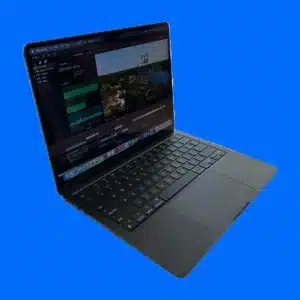What Is macOS?

What is macOS
Everything you need to know about types of macOS updates we will discuss in this article.
Apple’s macOS is the operating system for the MacBook, MacBook Air, MacBook Pro, iMac, Mac Pro, and Mac mini. The latest version is macOS 13 Ventura.
macOS 13 Ventura
Release date: 4th Quarter, 2022

The 19th major release of the Mac operating system, MacOS 13 Ventura. It is named after the Californian coastal city renowned for its beaches, surfers, and windsurfers. The operating system boosts the performance of the Mac platform with new continuous features and potent productivity tools.
A brand-new feature called Stage Manager automatically arranges open files and programs on the desktop. So users may concentrate more on the main window they are working in rather than the several other windows competing for their attention. Stage Manager arranges open files and apps into little icons on the left side of the screen and places the primary window directly in the center of the screen. There are several types of macOS.
In Ventura, Mac Mail undergoes a significant overhaul. Senders can lastly schedule emails and stop delivery. Users can also choose to follow up on unanswered emails and choose to return to a message at a certain time and date.
A key component of the macOS is continuity, which expands your possibilities for using multiple Apple devices simultaneously when necessary. Call someone on your iPhone? You receive a prompt to switch to the larger screen when you are close to your Mac. Additionally, a new FaceTime Handoff feature makes it simple to transfer a FaceTime call from an iPhone to an iPad or Mac. Users can also use their phones as a webcam for their Macs thanks to the Continuity Camera function.
Additional new features include:
- Edit or delete messages sent via iMessage
- Shared tab groups
- Passkeys that replace passwords in Safari
- iCloud shared photo library
- New Clock and Weather apps
- Enhanced smart folders in Notes
- Spotlight improvements
- Improved gaming experience
- Live text for videos
- Calming background sounds
Types of macOS; macOS 13 Ventura
Release date: October 25, 2021

The 18th major edition of the Mac operating system, macOS Monterey is named after the city of Monterey on the rocky central coast of California. It has many improvements and builds on the strong basis of Big Sur.
There is a long-awaited demand to use a single mouse, trackpad, and keyboard to control both Macs and iPads at the same time. Universal Control is now using it.
The Mac’s basic applications have several improvements. A handy Save button for photos has added to Messages. While Reading Goals, Reading Now, and Want to Read features have added to Apple Books. A simplified tab bar, tab groups, and iCloud Private Relay are just a few of the major changes made to Safari. This service makes sure that all data leaving your Mac is secured to prevent its usage and interception.
A significant improvement has made to FaceTime’s audio and visuals. You and the other participants can view TV shows and movies or listen to music during group FaceTime calls. When you pause, fast-forward, or go to a different screen with synced playback, the change quickly appears on the screens of all call participants.
A Mac with Apple’s M1 chip required for a few new functions. These include a portrait mode for FaceTime, unlimited, time-free on-device dictation, spatial audio, an interactive globe, and new Maps app city experiences.
Additional new features include:
- To leave a digital legacy for your loved ones, such as images and movies, after your passing
- An “Erase all content and settings” feature for the Mac like the one on the iPhone
- Adding indicators for the camera and microphone
- New iCloud Shared folder in the Finder.
- Low Power Mode of Bluetooth devices
- A separate password manager in System Preferences
- Shortcuts app added to the Mac
Types of macOS: macOS 11 Big Sur
Release date: November 12, 2020

The 17th major edition of the Mac operating system, macOS 11 Big Sur is named after the mountainous area in central California. The new macOS Big Sur design, introduced at WWDC20, is amazingly gorgeous and instantly recognizable as an iOS interface.
The most important updates to the Apple operating system in years contained in macOS Big Sur, as opposed to Catalina, which only made small enhancements over Mojave. The ability of the new M1-chip Macs to run iPad and iPhone apps natively on the Mac is one distinct feature.
Here are other changes you’ll find:
- With Big Sur, the iOS Control Center makes its Mac debut.
- Redesigns of the Calendar, Mail, Photos, and Messages applications have been long overdue.
- Using its Intelligent Tracking function, Safari generates a privacy report for each page you visit and keeps track of your passwords. It is necessary to guard against a data breach.
- Look Around, Maps’ response to Google Street View, and Guides from reliable sources are among the new additions.
The key new features include:
- Safari is 50 percent faster than Chrome
- The Control Center
- Customizable widgets in the notifications menu
- Supports iOS apps on M-1 chip Macs
- Spacial audio supports for AirPods Pro
- The ability of the Maps app to scan the area
- Improved group messaging in Messages
Types of macOS: macOS 10.15 Catalina
Released: October 7, 2019

The 16th major edition of the computer operating system, macOS 10.15 Catalina, introduced in June 2019 at WWDC. It is named after the island off the coast of California. In September 2019, it became a free update for all Mac users and was the first version of macOS to only supports 64-bit programs.
It has a brand-new development platform called Catalyst. It enables developers to create one app that runs on both iPad OS and macOS. Apple’s drive to enable speech control of your Mac continues with voice control.
Here are some other modifications Apple made to Catalina.
- With the support of AirDisplay or AirParrot, Sidecar enables the use of an iPad as a second screen.
- It divided iTunes into three new apps: Music, Podcasts, and Apple TV.
- The Finder manages iOS devices that connect to your Mac.
- A new program named Find My created by combining Find My Mac and Find My Friends.
- Reminders handle attachments, and Siri is more intelligent about when to notify you.
- It removed the widget app Dashboard
These are the key new features:
- Only 64-bit applications
- Catalyst apps
- Sidecar iPad second screen
- iTunes breakup
- Find My app
Types of macOS: macOS 10.14 Mojave
Released: September 24, 2018

Mojave, also known as macOS 10.14, first introduced in June 2018 at WWDC and made available on September 24 of the same year. macOS 10.14 brought Apple News, Voice Memos, and Home to the Mac desktop. It bears the same name as California’s Mojave Desert. Additionally, it had a superior dark mode and was the last version of macOS to support 32-bit programs (you’ll get a warning if you try to use one of them).
A new Gallery View for visual file browsing and a new view for file metadata are now available in the Finder. Similar to iOS, when you take a screenshot, the image flashes briefly in the corner of the screen. macOS Mojave also added video capability to its screenshot tool.
Group FaceTime is a feature in Mojave that allows you to communicate with up to 32 people at the same time via video or audio from your Mac, iPhone, iPad, or Apple Watch.
Apple’s web browser, Safari, now includes tracking prevention and sends fewer system details to websites. For brand-new internet accounts, it can generate secure passwords, store them, and autofill forms.
In order to align it with the iOS App Store, the Mac App Store completely redesigned with a new user interface and editorial content. For simpler app discovery, there is a new Discover tab as well as Create, Work, Play, and Develop tabs. With this update, the iOS News, Stocks, Voice Memos, and Home (for HomeKit automation) apps were brought across.
Key new features include:
- Four iOS apps
- Improved dark mode
- Gallery view
- Group FaceTime
- Mac App Store improvements
Types of macOS: macOS 10.13 High Sierra
Released: September 25, 2017

macOS 10.13, the 14th version of the operating system named after the High Sierra mountain range in California. Instead of a total overhaul, this OS’s follow-up to Sierra (10.12) brought performance and technical updates.
Apple’s new Apple File System enabled 64-bit inode numbers and flash memory to speed up routine file-related processes. Such as copying, locating, and backing up data, replaced the HFS Plus file system.
Here are other key changes:
- The low-level graphics API Metal got its second release as Metal 2, adding virtual reality and machine learning features and support for external graphics cards.
- With iOS 11, Photos received an improved sidebar, new editing tools, and the capacity to sync with tagged People.
- Mail got a new Spotlight search called Top Hits and a 35 percent improvement in storage space.
- Safari now has the option to block autoplay videos and third-party trackers using machine learning. It could permanently enable reader mode.
- Users can now pin notes to the top of their list and the Notes app got support for tables.
- Both Siri’s voice and artificial intelligence have improved due to machine learning.
Key new features include:
- Apple File System
- Metal 2 graphics
- New Photos features
- Improved storage in Mail
- Tables in Notes
- More expressive, smarter Siri
Types of macOS: macOS 10.12 Sierra
Released: September 20, 2016

macOS 10.12 Sierra, named for the Sierra Nevada region in California. It was the first Macintosh operating system called macOS. It replaced OS X El Capitan (also named after a well-known California geographical feature). First announced in June 2016, macOS Sierra came as a free update to El Capitan in September.
It introduced a number of features that are still present in macOS today, such as
- The first Siri desktop version
- iCloud Drive with improved storage
- Automatic unlocking for Macs
- Tabbed interfaces for all supporting apps
- Watching videos in picture-in-picture mode while working on other tasks
- The first support for Apple File System
- Night Shift, which dims blue light from the screen at night
Apps got new features, including:
- Improved face recognition and new object and scene recognition for Photos power the Memories photo groups.
- New development tools for Safari allowed extensions to interface with outside applications.
- Safari now features web-based Apple Pay buttons that enable you make purchases with your iPhone or Apple Watch.
- Messages now have larger emojis, tap-back functionality, YouTube video playback, and link previews.
- You may view the iMessage enhancements made in iOS 10 and turn read receipts on and off for each chat using the Mac Messages app.
- iTunes got a new For You tab and a lyric feature for its MiniPlayer.
- You can collaborate and share on particular Notes using Notes.
Key new features include:
- Siri on the desktop
- iCloud Drive
- Picture-in-picture mode
- Night Shift
- Apple Pay on the web
- iMessage integrations
More About macOS
macOS is a continuation of Mac OS X (later called OS X, pronounced oh-ess-ten), initially released in 2001. It is based on Unix and has several internal features in common with Unix and Linux, most notably support for multiple users, preemptive multitasking, and Terminal access to the system.
In order to be compatible with Apple’s other operating systems, such as iOS, watchOS, and tvOS, OS X was renamed as macOS 10.12 Sierra in 2016. Finally, you could have a good understanding about the types of macOS.
How to Set up Dual Monitors on a Mac >> Follow the Link
Frequently Asked Questions (FAQs)
Are Mac and macOS different?
macOS (originally named “Mac OS X” until 2012 and then “OS X” until 2016) is the current Mac operating system that officially succeeded the classic Mac OS in 2001. Although the system was originally marketed as simply “version 10” of Mac OS, it has a history that is largely independent of the classic Mac OS.
Will macOS Monterey slow down my Mac?
According to several forums, the macOS Monterey build can certainly slow down the performance of your machine. Because the new build has some bugs, multiple apps and services are being optimized for the new operating system. Consequently, you could notice a slowdown at first.
Why can’t I update from High Sierra?
Try the solutions listed below to solve this issue if you run into trouble installing macOS 10.13/10.13.4: Delete the “Install macOS Sierra” file with a question mark from Launchpad by opening it. Try downloading a fresh macOS Sierra update 10.13/10.13 after restarting your computer. Continue reading
Is macOS 10.15 Catalina good?
The most recent version of macOS, Catalina, provides improved security, strong performance, the option to use an iPad as a second screen, as well as several smaller improvements. Check your apps before you upgrade since it also stops support for 32-bit apps. PCMag editors select and review products independently.
FAQs Con’t
How do I get Mojave 10.14 on my Mac?
You can download and install macOS 10.14 Mojave from the App Store on your Mac. Search for macOS Mojave in the App Store of your current macOS version. When a dialog pops up, click “Continue” to start the installation process after selecting the button to do so.
Why is Big Sur not available for my Mac?
Sync Your Date And Time Settings. Having a clock that’s too advanced or behind the standard internet, time can be considered a security breach for Apple. In this case, if you haven’t synced your Date and Time settings, then that may be why the macOS Big Sur update is not found.








